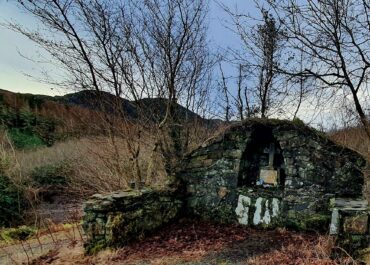Ritual site - holy well, Dunmuckrum, Co. Donegal
Tucked away amongst a tangle of thorn trees in Dunmuckrum, County Donegal, sits Tobar Patrick, a modest stone-built holy well that has quietly marked this corner of the Irish landscape for centuries.
Ritual site - holy well, Dunmuckrum, Co. Donegal
Like many of Ireland’s sacred wells, this simple structure represents a fascinating blend of pre-Christian and Christian traditions, where ancient water veneration merged seamlessly with the cult of saints. The well takes its name from St. Patrick, though its origins likely stretch back much further than the arrival of Christianity to these shores.
The well itself is a humble affair; rough-hewn stones carefully arranged to protect and define the sacred spring that bubbles up from the earth below. The surrounding thorn trees, whether hawthorn or blackthorn, add to the site’s otherworldly atmosphere, their gnarled branches creating a natural sanctuary that has sheltered pilgrims and locals alike through the generations. These trees are no accident; throughout Ireland, thorn trees are traditionally associated with holy wells and fairy forts, marking liminal spaces where the everyday world meets something altogether more mysterious.
Today, Tobar Patrick stands as a testament to the enduring nature of folk belief in rural Ireland. Though it may lack the elaborate stone crosses or decorative carvings found at more famous pilgrimage sites, its very simplicity speaks to centuries of quiet devotion. Local tradition likely preserves stories of pattern days, when communities would gather here for prayers and rounds, and perhaps tales of the well’s healing properties; most Irish holy wells were credited with curing specific ailments, from eye complaints to rheumatism.


